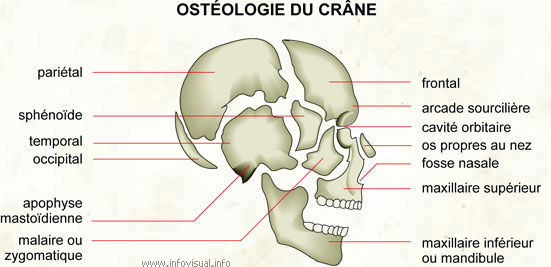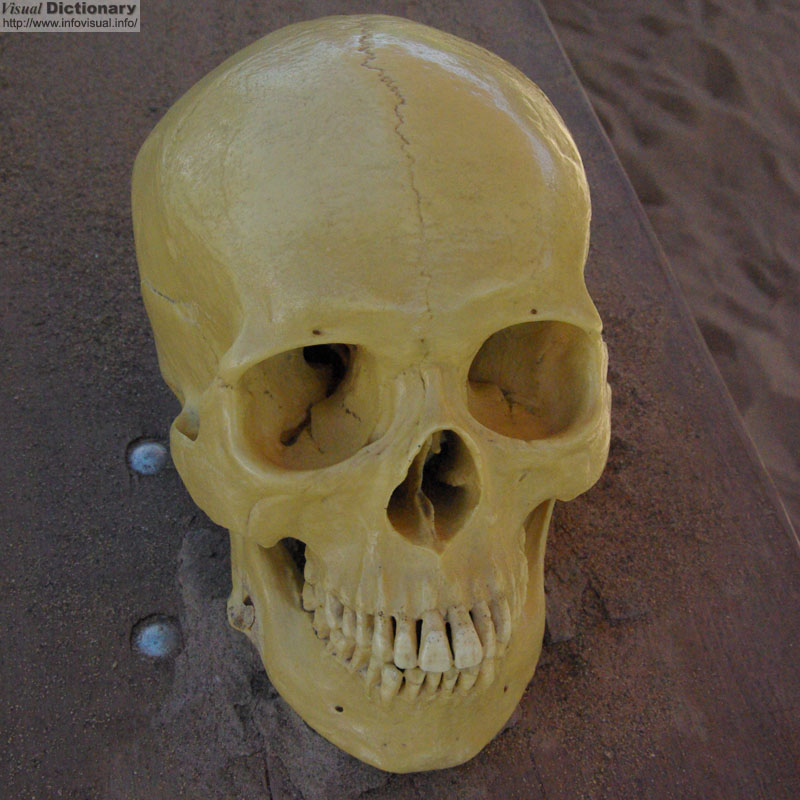Ostéologie du crâne

Frontal: Os formant le front.
Arcade sourcilière: Os formant un arc, situé au niveau des sourcils.
Cavité orbitaire: Partie creuse du crâne ou repose l'oeil.
Os propres au nez: Os formant le nez.
Fosse nasale: Cavité osseuse relative au nez.
Maxillaire supérieur: Partie osseuse supérieure de la mâchoire.
Maxillaire inférieur ou mandibule: Partie osseuse inférieure de la mâchoire.
Malaire ou zygomatique: Os formant la joue.
Apophyse mastoïdienne: Excroissance osseuse à la base du crâne.
Occipital: Os formant la partie postérieure inférieure du crâne.
Temporal: Os formant la tempe.
Sphénoïde: Os situé à la base du crâne.
Pariétal: Os formant les côtés et le haut de la boîte crânienne.
Photo :
EN : Human
skull
FR : Crâne
humain
ES : Cráneo
humano

The humain skull is a bony structure found in many animals which serves as the general framework for the head. The skull supports the structures of the face and protects the head against injury. The skull is made up of two bones: the cranium and the mandible. A skull that is missing a mandible is only a cranium, this is the source of a very commonly made error in terminology. Protection of the brain is only one part of the function of a bony humain skull. For example, a fixed distance between the eyes is essential for stereoscopic vision, and a fixed position for the ears helps the brain to use auditory cues to judge direction and distance of sounds.
Animation : Crâne humain
Merci à YouTube de nous permettre d'observer ce vidéo.